Last updated: February 19, 2025
Article
Mule Deer
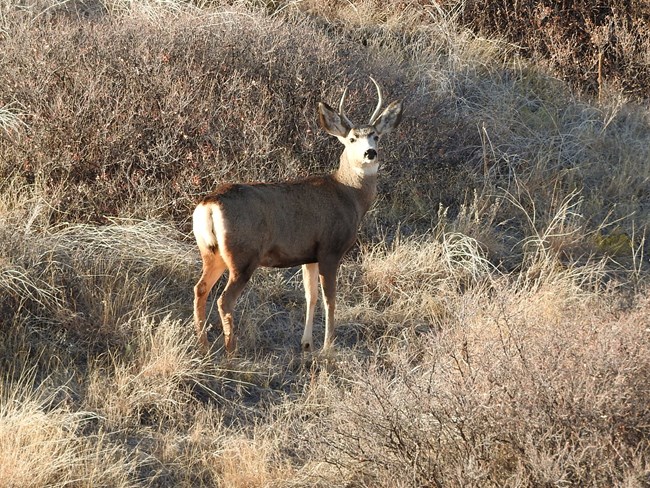
NPS/Eric Grunwald
What is a Mule Deer?
Mule deer (Odocoileus hemionus) are a common deer species of the western United States. They are typically found west of the Missouri River in the Great Plains, into the Rocky Mountains, and along the Pacific Coast as far north as the coastal islands of Alaska and as far south as southern Baja California. Mule deer are well adapted to arid, rocky environments typical of many parts of the American west. In many places their range overlaps that of the white-tailed deer (Odocoileus virginianus). However, mule deers' bodies tend to be a bit larger and heavier than white-tailed deer. In addition, their ears are larger (generally about 3/4 the length of their heads) than those of white-tailed deer and are more pointed at the ends.
The typical mule deer is about 31 to 42 inches tall at the shoulders. They are 3.9 to 6.9 feet long from nose to tail. Adults weigh anywhere from about 100 lbs for a female up to about 300 lbs for a male. Male mule deer, called bucks, have forked antlers which they use as weapons to fight off competitors for mates during the breeding season or "rut". Females do not have antlers.
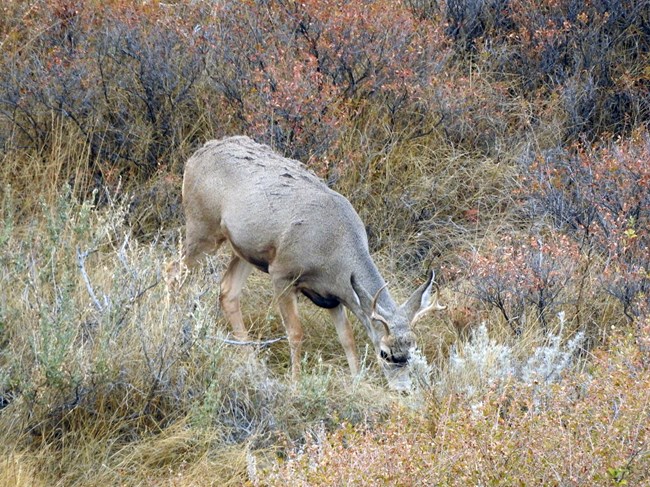
NPS
Mule Deer Diet
Mule deer are ruminants; animals with four-chambered stomachs that chew cud reguritated from their first stomach, or rumen. Bacteria in the rumen helps a mule deer break down their food. Compared to other animals of their size, mule deer have small stomachs. This means they must be selective in what they eat and browse on higher-quality, more nutritous plants. They feed primarily on forbs (flowering, herbaceous plants), the leaves and twigs of woody plants, and on mast (berries, fruit). In the grasslands of western Nebraska and the western Dakotas, mule deer browse heavily on skunkbush sumac and Rocky Mountain juniper. They may even browse on the pads of pricklypear cactus.
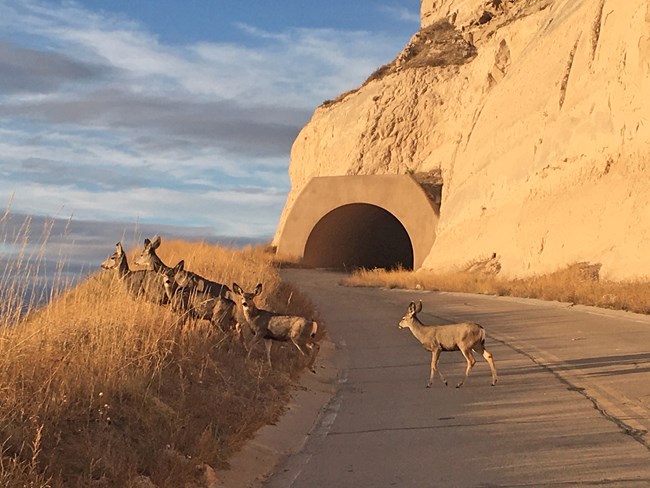
NPS/Kayla Gasker
Mule Deer Seasonal Behaviors
Mule deer are social animals and typically stay together in multigenerational familly groups of related females. Bucks older than yearlings will often leave their family groups and travel independently or in small groups with other bucks. In late summer, mixed family groups will often combine into larger herds for protection through the winter.In late fall the mating season, or rut, starts. Bucks with the largest antlers typically earn the right to mate with females. Throughout the rut, males will expend vast reserves of energy in their quest to fight off competing suitors.
Six to seven months after mating, in early summer, females give birth to one or two fawns. The spotted fawns nurse for periods and go into hiding in underbrush while their mothers feed. After 60 to 75 days the fawns are weaned off their mother's milk.
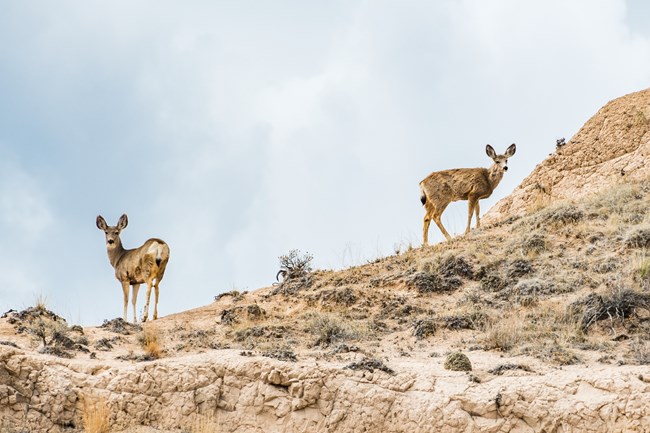
NPS/Robert Wagner
Mule Deer are Components of Healthy Ecosystems
As herbivores, mule deer provide the middle-link in a food chain. The energy they absorb from consuming the plants that they eat at the bottom of the food chain is transferred to the carnivores, the animals at the top of the food chain. In western Nebraska and the western Dakotas, mule deer are preyed upon by mountain lions, bobcats and coyotes.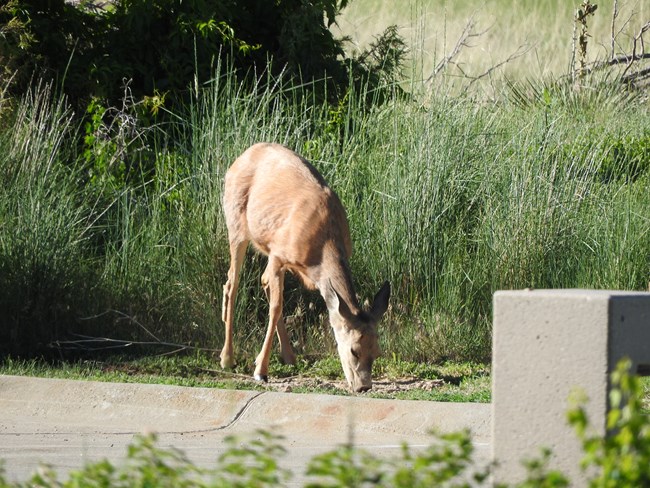
NPS
Observing Mule Deer
Mule deer are among the more commonly seen animals in the national parks of the Great Plains. Like all wildlife, it is important to observe mule deer from a distance, especially during the fall rut when males can act agressively.Because they tend to browse vegetation alongside of roads, especially at dusk and dawn, it is important to drive with caution when you visit your national parks and other areas where mule deer live. Following speed limits and paying attention to the roadway, helps prevent collisions not only with mule deer, but other animals that call our parks home. Thank you for doing your part to ensure the continued survival of our native wildlife.
